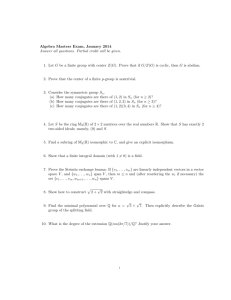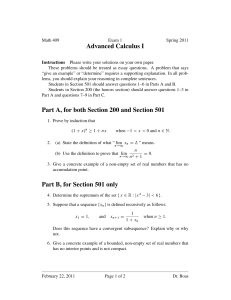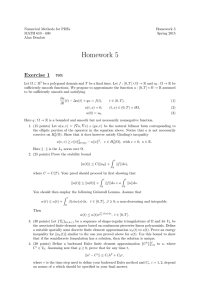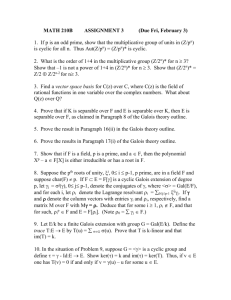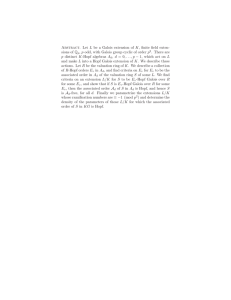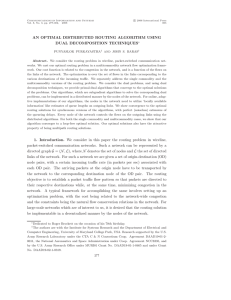GDT “GALOIS THEORY FOR SCHEMES” CHAPTER 1 GALOIS THEORY OF FIELDS Exercise 1
advertisement
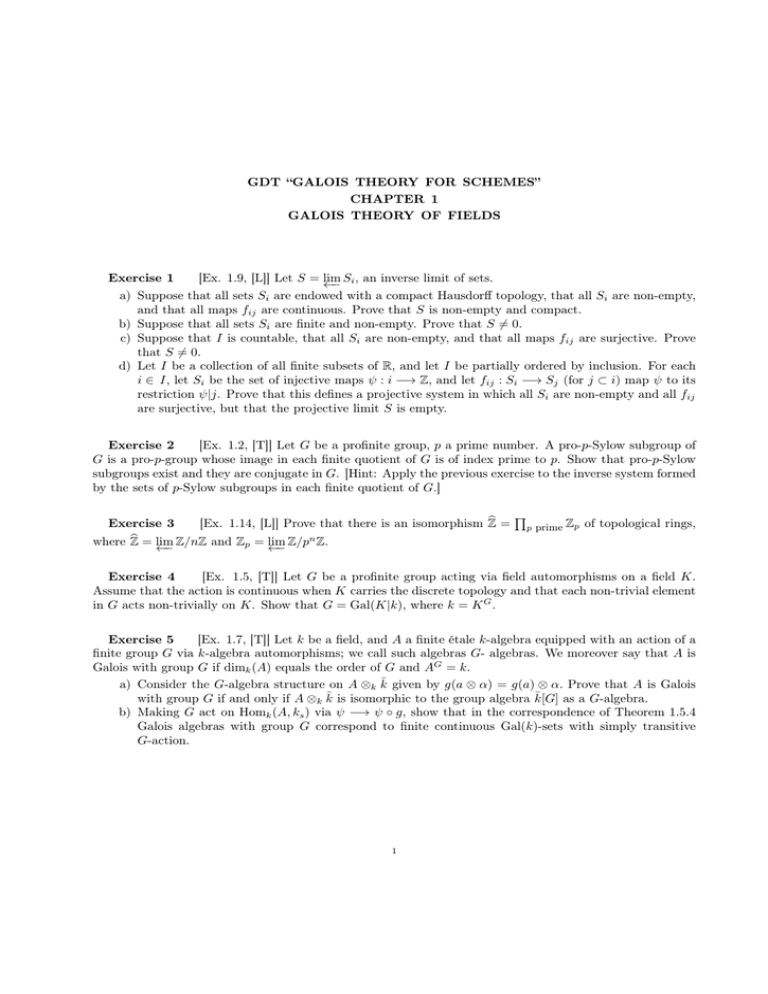
GDT “GALOIS THEORY FOR SCHEMES” CHAPTER 1 GALOIS THEORY OF FIELDS Exercise 1 [Ex. 1.9, [L]] Let S = lim Si , an inverse limit of sets. ←− a) Suppose that all sets Si are endowed with a compact Hausdorff topology, that all Si are non-empty, and that all maps fij are continuous. Prove that S is non-empty and compact. b) Suppose that all sets Si are finite and non-empty. Prove that S 6= 0. c) Suppose that I is countable, that all Si are non-empty, and that all maps fij are surjective. Prove that S 6= 0. d) Let I be a collection of all finite subsets of R, and let I be partially ordered by inclusion. For each i ∈ I, let Si be the set of injective maps ψ : i −→ Z, and let fij : Si −→ Sj (for j ⊂ i) map ψ to its restriction ψ|j. Prove that this defines a projective system in which all Si are non-empty and all fij are surjective, but that the projective limit S is empty. Exercise 2 [Ex. 1.2, [T]] Let G be a profinite group, p a prime number. A pro-p-Sylow subgroup of G is a pro-p-group whose image in each finite quotient of G is of index prime to p. Show that pro-p-Sylow subgroups exist and they are conjugate in G. [Hint: Apply the previous exercise to the inverse system formed by the sets of p-Sylow subgroups in each finite quotient of G.] b=Q Exercise 3 [Ex. 1.14, [L]] Prove that there is an isomorphism Z p prime Zp of topological rings, n b where Z = lim Z/nZ and Zp = lim Z/p Z. ←− ←− Exercise 4 [Ex. 1.5, [T]] Let G be a profinite group acting via field automorphisms on a field K. Assume that the action is continuous when K carries the discrete topology and that each non-trivial element in G acts non-trivially on K. Show that G = Gal(K|k), where k = K G . Exercise 5 [Ex. 1.7, [T]] Let k be a field, and A a finite étale k-algebra equipped with an action of a finite group G via k-algebra automorphisms; we call such algebras G- algebras. We moreover say that A is Galois with group G if dimk (A) equals the order of G and AG = k. a) Consider the G-algebra structure on A ⊗k k̄ given by g(a ⊗ α) = g(a) ⊗ α. Prove that A is Galois with group G if and only if A ⊗k k̄ is isomorphic to the group algebra k̄[G] as a G-algebra. b) Making G act on Homk (A, ks ) via ψ −→ ψ ◦ g, show that in the correspondence of Theorem 1.5.4 Galois algebras with group G correspond to finite continuous Gal(k)-sets with simply transitive G-action. 1
